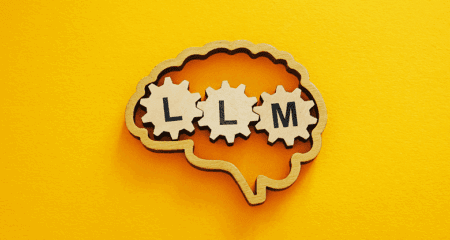Contrary to what marketing media have been saying, email is far from dead. In fact, March 2018 research by The Radicati Group found that approximately 281 billion emails are sent daily worldwide – and that figure is only expected to grow.
But with so many emails crowding our inboxes, it can be tricky to send one that stands out. Here are 7 ways you can use design to capture your recipient’s attention and increase engagement.
1. Leverage your brand colours
Brand colours are a crucial part of your visual identity – so much so that you can recognise the likes of Coca-Cola and Cadbury by their colour alone. Using your brand colours in email campaigns gives people design cues that make it easy to recognise you, too. Indeed, research shows that colours increase brand recognition by up to 80%, and 85% of consumers buy a product because of its colour.
Colours can also trigger memories, so if a customer has had a positive experience, seeing your colours can create positive emotions and increase the likelihood they’ll engage with your email.
Airbnb does this well – they focus attention on their red, making it the first thing you see in the email. This then corresponds to call-to-action (CTA) buttons they use on the website, building that association of red with searching for a holiday.
2. Use neon to catch attention
Colours aren’t just useful for brand recognition – the right ones can also capture attention. And given that 47% of emails are opened on the go on smartphones, catching attention is more important than ever.
Bright, neon colours are particularly good at this, especially when combined with high-contrast design. Use ‘popping’ colours to make your emails eye-catching and increase the likelihood that people will read your key messages.
This example from designer Kate Spade uses yellow to gain readers’ attention quickly, making it hard not to stop and read the headline and CTA. (A strong centre image, contrast and stand-out CTAs are other effective design elements at work here.)
3. Use responsive design
Emails can be opened on a desktop, laptop, tablet or smartphone, all of which are different when it comes to size and design best practice. You therefore need to keep that reader experience in mind, and using a responsive design is the best way to ensure your email renders correctly on all devices.
For example, make sure buttons are thumb-friendly, so users don’t have to zoom in to click. Key elements shouldn’t be pushed too far down on mobile, risking that readers lose interest before they hit the critical information or button. And consider the different font and image sizes, as well as the difference in padding, required to maximise readability on each device.
And don’t just rely on your email software’s default responsive settings. Build your email with mobile in mind and then adjust the design as necessary for each device, using hybrid coding as required. And don’t forget to test (more on that below)!
4. Use animation to grab readers’ attention
Thanks to social media, GIFs are more popular than ever, and as a result, email marketers are starting to incorporate them into their campaigns.
Animation and GIFs can catch attention and increase the likelihood that people will read more of your email. They can also add humour to make your brand more memorable and personable. Take for example this GIF used in an email campaign to our clients of the new, importing data faster, feature on our platform.
Remember, however, that not all email clients support GIFs – so don’t rely on them to convey all your information. You need to ensure those who can’t see these elements still receive a compelling, well-designed email.
5. Go interactive
Experts are hailing interactive design as the next email trend – 27% of marketers see this as the next big thing, according to Litmus research. Interactive emails allow users to do things like answer a survey, select from a drop-down or even make a purchase directly within the email. These features can help boost engagement rates because you’re not forcing the reader to change platform or app to complete the action.
Again, like GIFs, not all email clients support this, and many users aren’t used to them yet (although this is changing with the rise in interactivity across social platforms like Instagram). So for now, prioritise interactive design for campaigns where it’s intrinsic to the purpose, and you can educate your audience on the benefits.
6. Keep it simple
Colours, images, GIFs, interaction – there are so many elements that can go into an email, so you need to make sure you don’t overdo it.
Remember: your goal is to get your reader to take some sort of action, so you need to pick the design elements that best support your objective. Otherwise, you risk distracting users and reducing engagement rates.
This ‘less is more’ approach applies to CTAs as well. Limit yourself to one – maybe 2 – per email to ensure users engage the way you want them to.
7. Use A/B testing to get the best results
The only real way to know whether or not a design element makes your email ‘better’ is to test it.
With the right software, you can A/B test any element of an email – from colour to image to subject line to CTA – to learn what works best with your audiences. Using the data, you can then identify trends and optimise future campaigns accordingly.
Here’s an example of a subject line A/B test we ran on one of our email campaigns.
A – Subject line: Save your seat
B – Subject line: Don’t be left in the dark
Email B had a higher open rate and double the click-through rate of email A. Going forward, we’re using this data to inform future subject lines and email designs to ensure we deliver the most value and get the best response.
Created a great email? Now make sure it doesn’t get stuck in spam filters. Read our email deliverability guide today.


